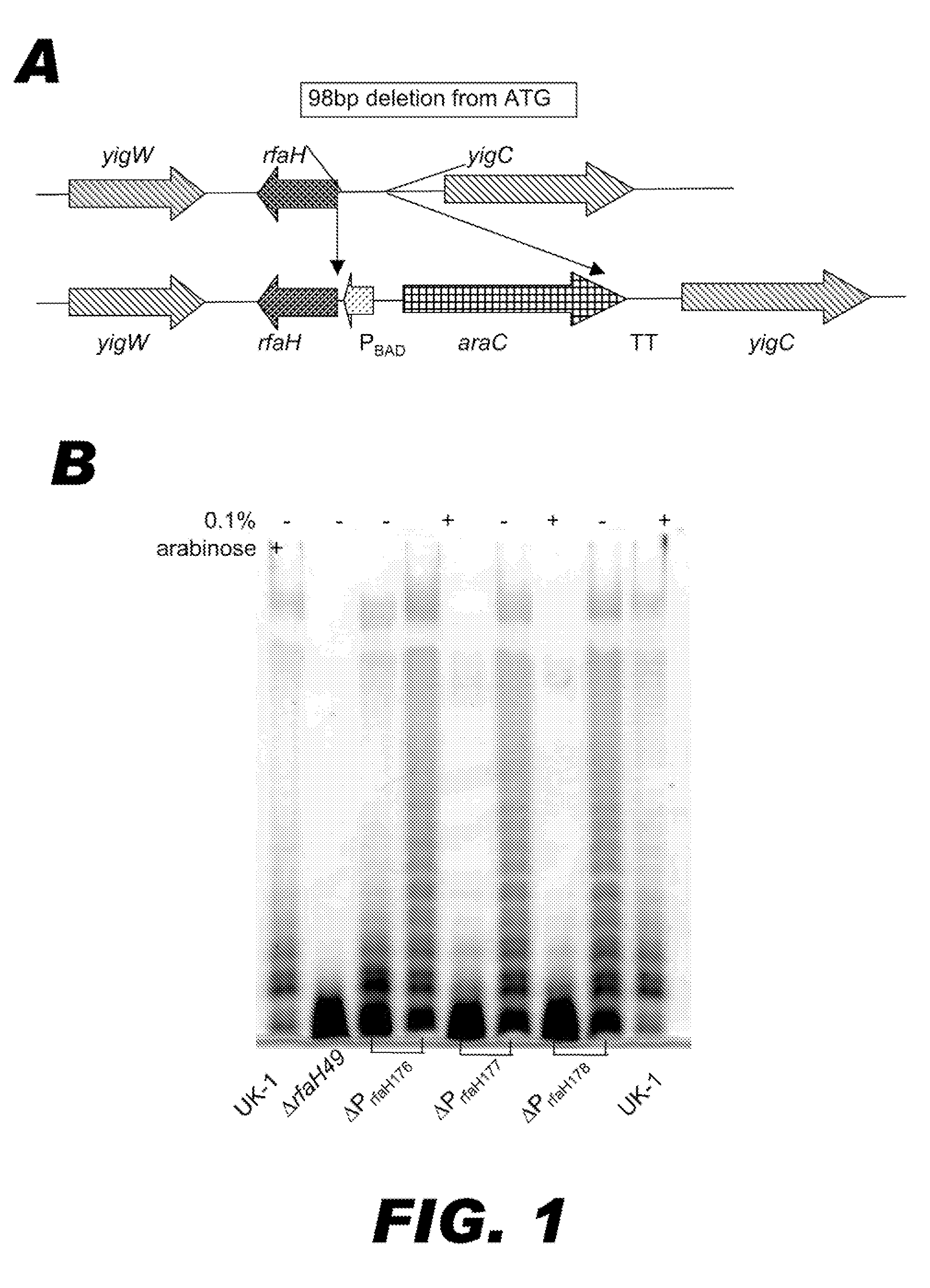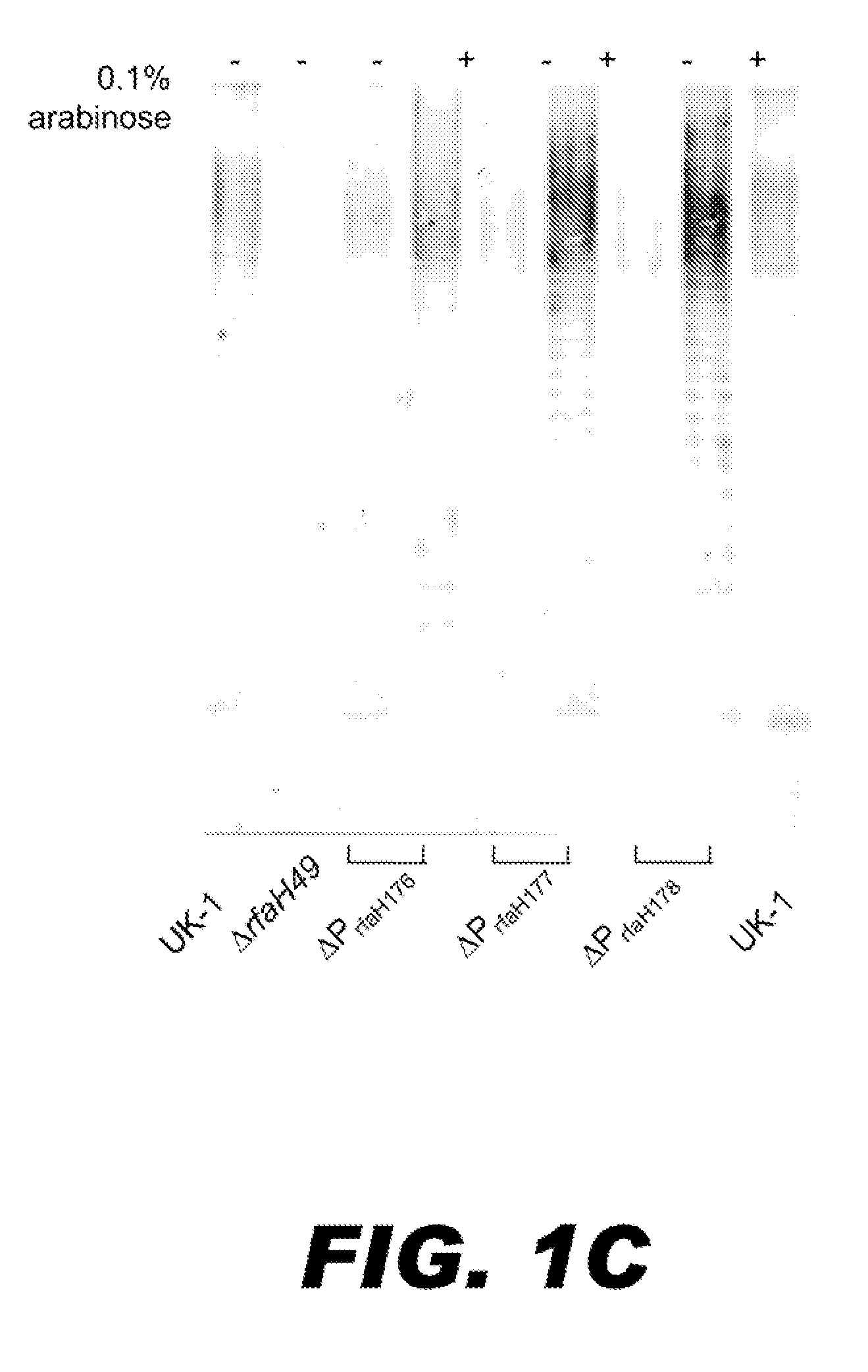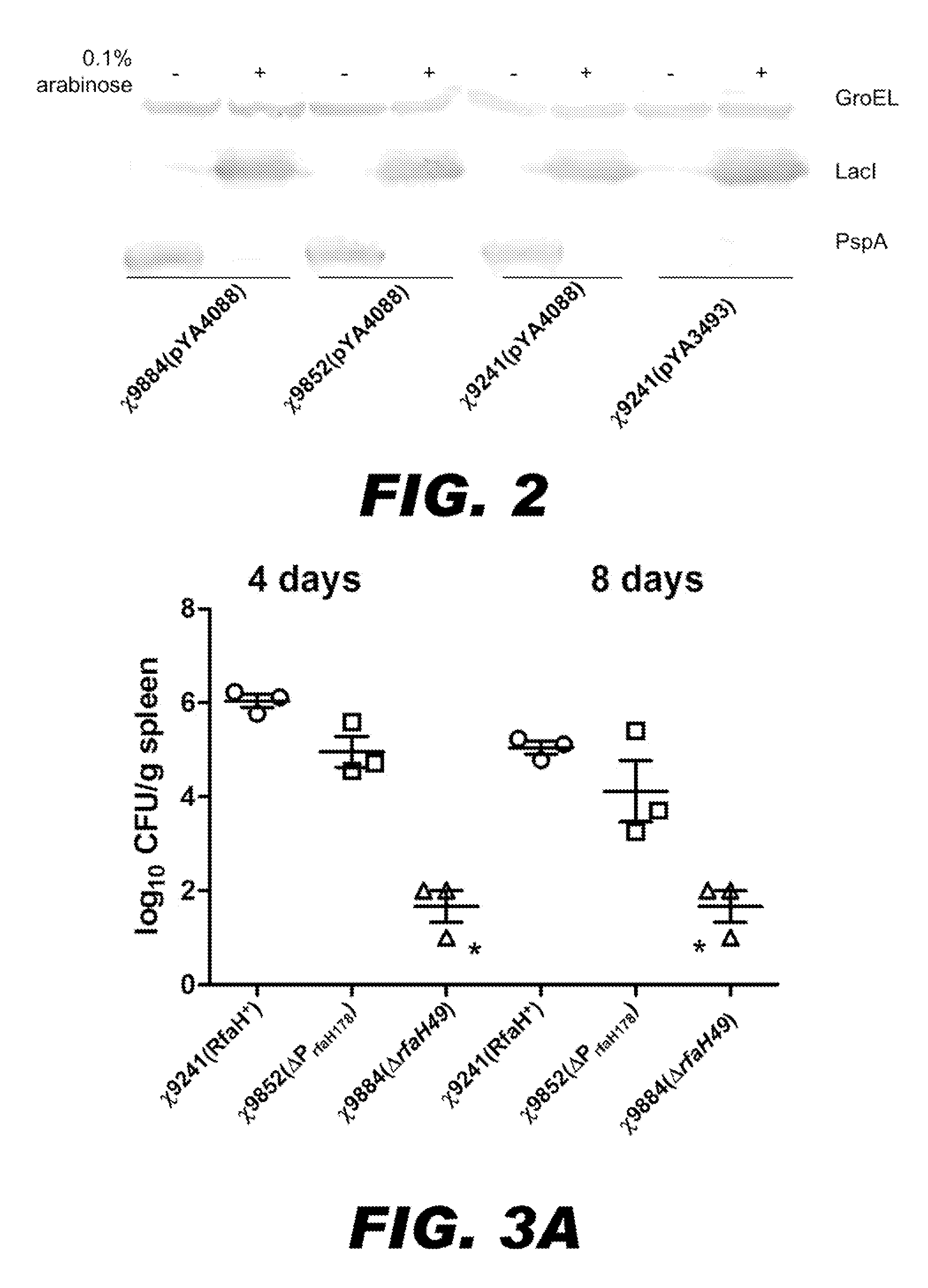BACTERIUM COMPRISING A REGULATED rfaH NUCLEIC ACID
a bacterium and nucleic acid technology, applied in the field of recombinant bacterium comprising a regulated rfah nucleic acid, can solve the problems of reducing the host immune response against the bacterium and being less immunogeni
- Summary
- Abstract
- Description
- Claims
- Application Information
AI Technical Summary
Benefits of technology
Problems solved by technology
Method used
Image
Examples
example 1
rfaH Mutations
[0118]When recombinant attenuated Salmonella vaccines (RASV) are used to deliver heterologous antigens, it may be advantageous to reduce the host immune response against the RASV carrier, thereby enhancing the immune response against the heterologous antigen. The dominant immunogen on the Salmonella cell surface is lipopolysaccharide (LPS) O-antigen (58). However, strains with mutations that eliminate LPS O-antigen may be less immunogenic due to failure of these kinds of mutants to colonize the intestinal tract and invade intestinal mucosal cells (60, 61). We hypothesize that in vivo programmed down-regulation of O-antigen expression, occurring after colonization of host lymphoid tissues, will serve to reduce the immune response against the RASV carrier, while triggering a strong immune response against heterologous antigens (12) and outer membrane proteins cross-reactive with other enteric bacteria (40). The genes for LPS core and O-antigen biosynthesis are clustered ...
example 2
rfc Mutations
[0152]The use of attenuated bacteria as vaccine delivery vehicles for heterologous antigens has been studied extensively in both animals and humans. Attenuated Salmonella is the best choice due its ability to, when given orally, stimulate both cell and humoral-mediated immunity against a heterologous antigen and thus provide protection against pathogen challenge (7, 10, 12). A good live oral Salmonella vaccine would retain its ability to colonize and invade host lymphoid tissues but would be completely avirulent after oral administration (35). The lipopolysaccharide of Salmonella is a recognized virulence determinant, and contributes to several stages of the infectious process, including swarming motility (64), intestinal colonization (46), serum resistance (57), invasion / intracellular replication (38), and resistance to killing by macrophages. Rough Salmonella strains that do not make the O-antigen side chains or outer core or inner core sugar were not able to survive ...
example 3
Regulated O Antigen Expression in Human Host-Restricted Serovars Salmonella enterica Serovar Typhi and Salmonella enterica Serovar Paratyphi A
[0199]S. Typhi is frequently used for construction of vaccines for human use. We introduced the ΔPrfc174::TT araC PBAD rfc mutation into S. Typhi strains Ty2 and ISP1820 to yield strains χ11120 and χ11121. The mutant strains exhibit arabinose-dependent 0 antigen synthesis (FIG. 15), indicating that this mutation functions in S. Typhi. When χ11120 was grown in nutrient broth containing arabinose and then transferred to nutrient broth without arabinose, O antigen was lost gradually over time, with nearly complete loss of O antigen by 12 generations (FIG. 16).
[0200]Another embodiment of this invention is to utilize arabinose-regulated O antigen synthesis in conjunction with another mutation that results in regulation of O antigen synthesis that is dependent upon a different sugar. We constructed S. Typhi strain χ11170 that carries the Δpmi-2426 Δ...
PUM
| Property | Measurement | Unit |
|---|---|---|
| temperature | aaaaa | aaaaa |
| volume | aaaaa | aaaaa |
| pH | aaaaa | aaaaa |
Abstract
Description
Claims
Application Information
 Login to View More
Login to View More - R&D
- Intellectual Property
- Life Sciences
- Materials
- Tech Scout
- Unparalleled Data Quality
- Higher Quality Content
- 60% Fewer Hallucinations
Browse by: Latest US Patents, China's latest patents, Technical Efficacy Thesaurus, Application Domain, Technology Topic, Popular Technical Reports.
© 2025 PatSnap. All rights reserved.Legal|Privacy policy|Modern Slavery Act Transparency Statement|Sitemap|About US| Contact US: help@patsnap.com



